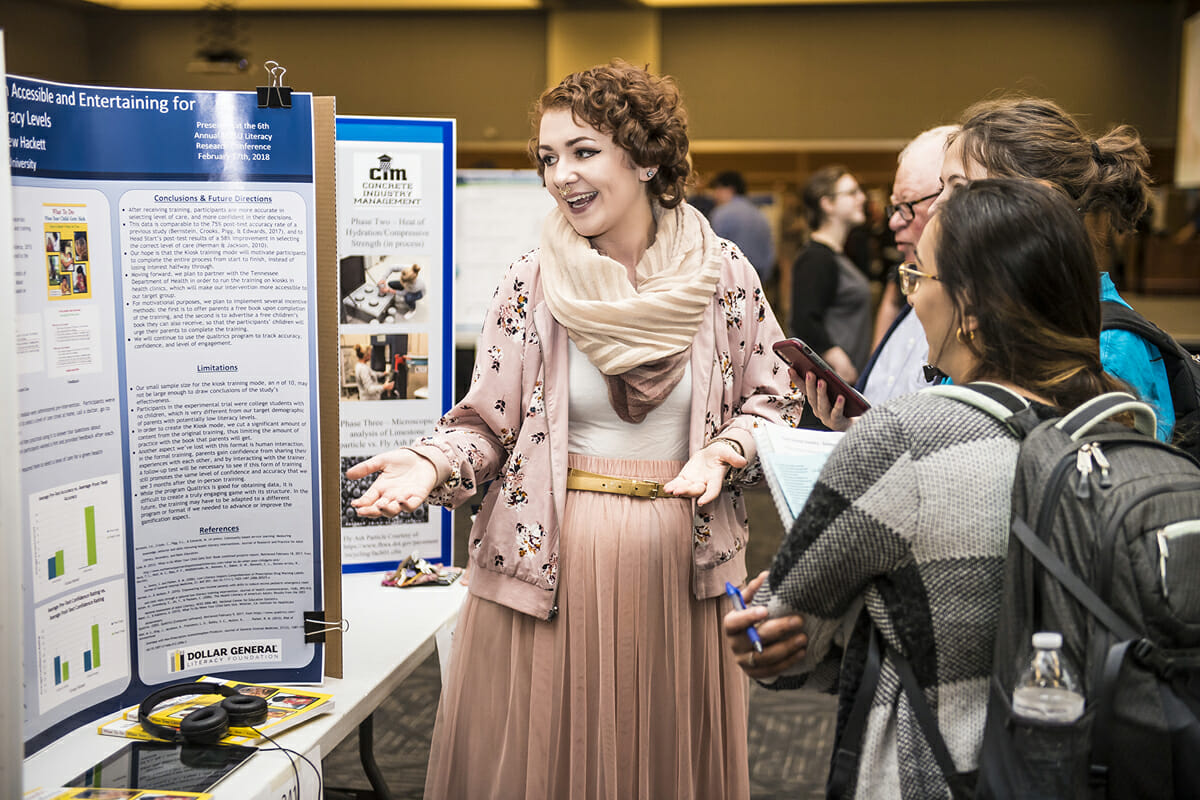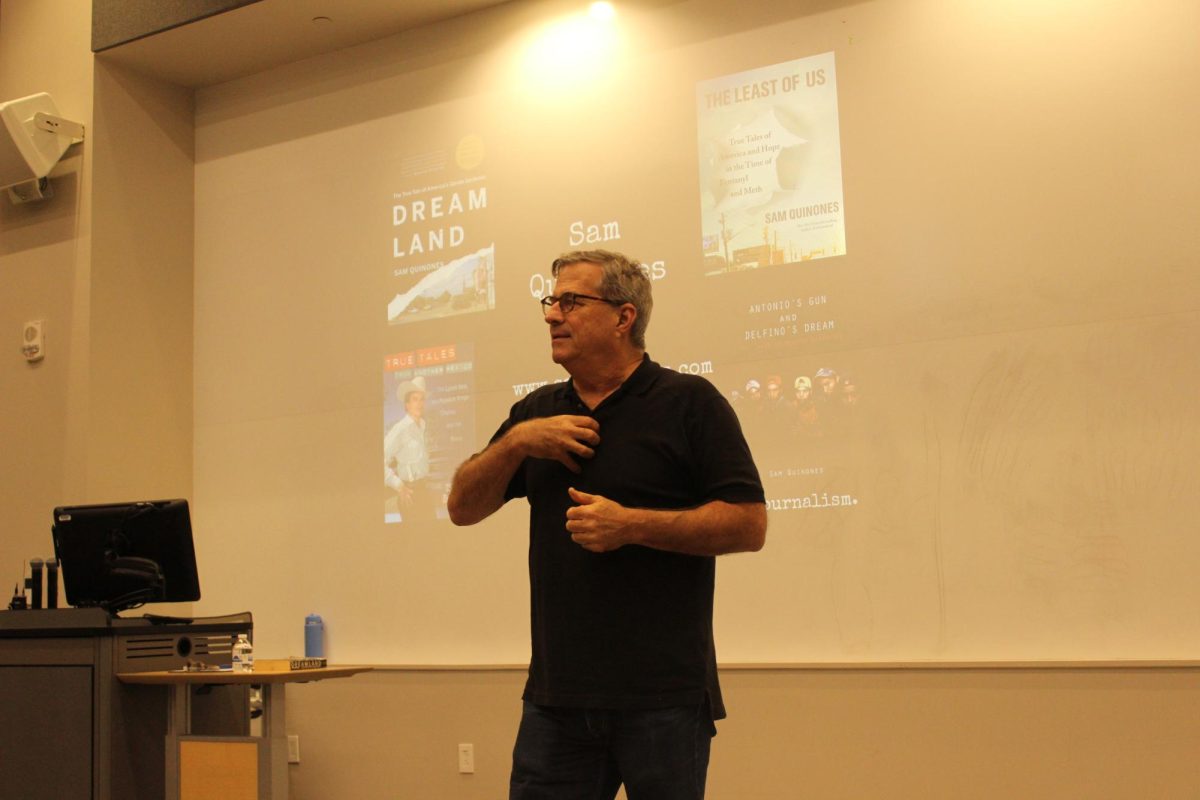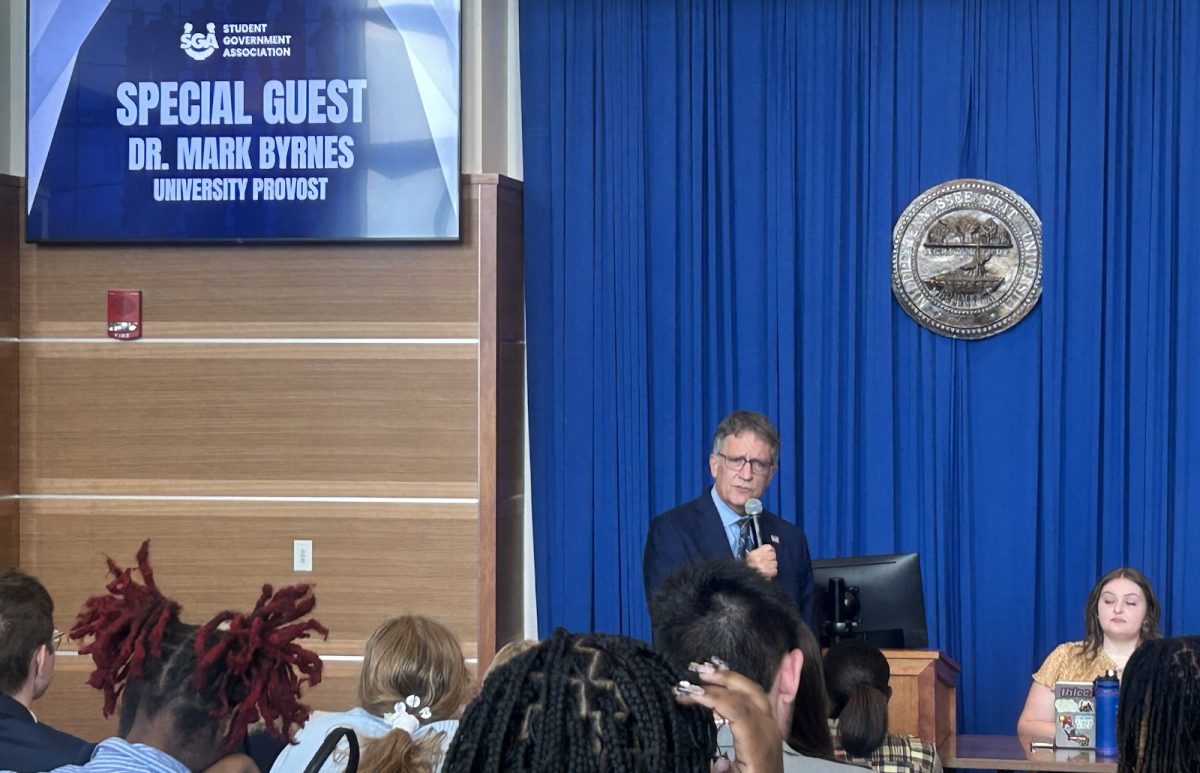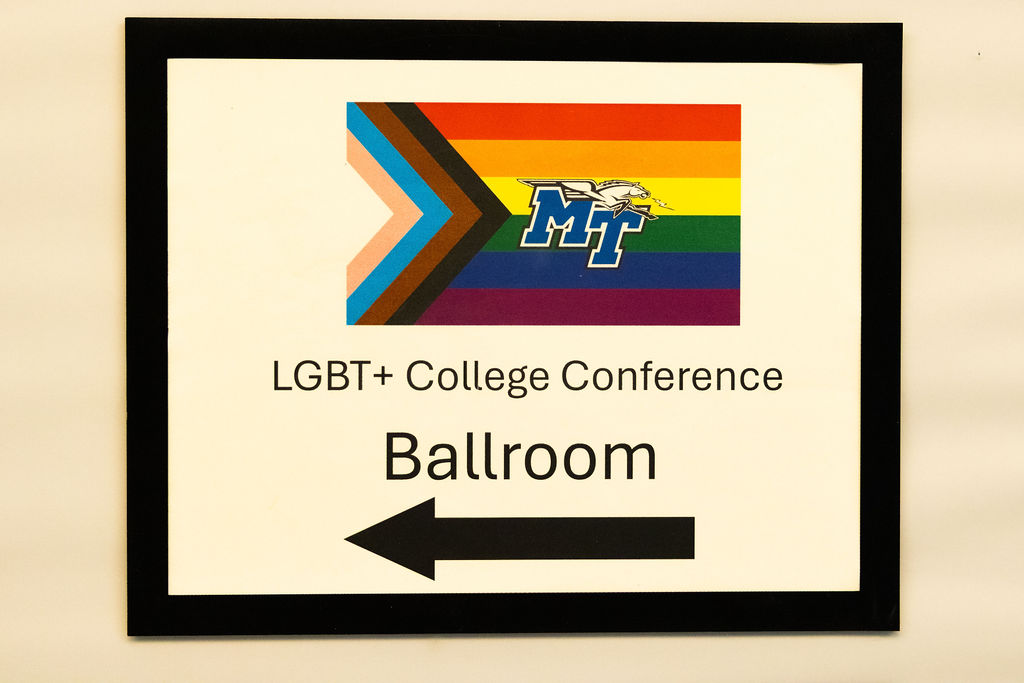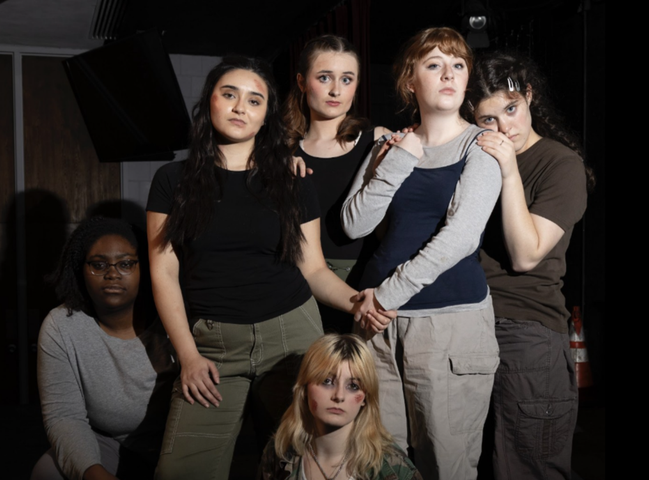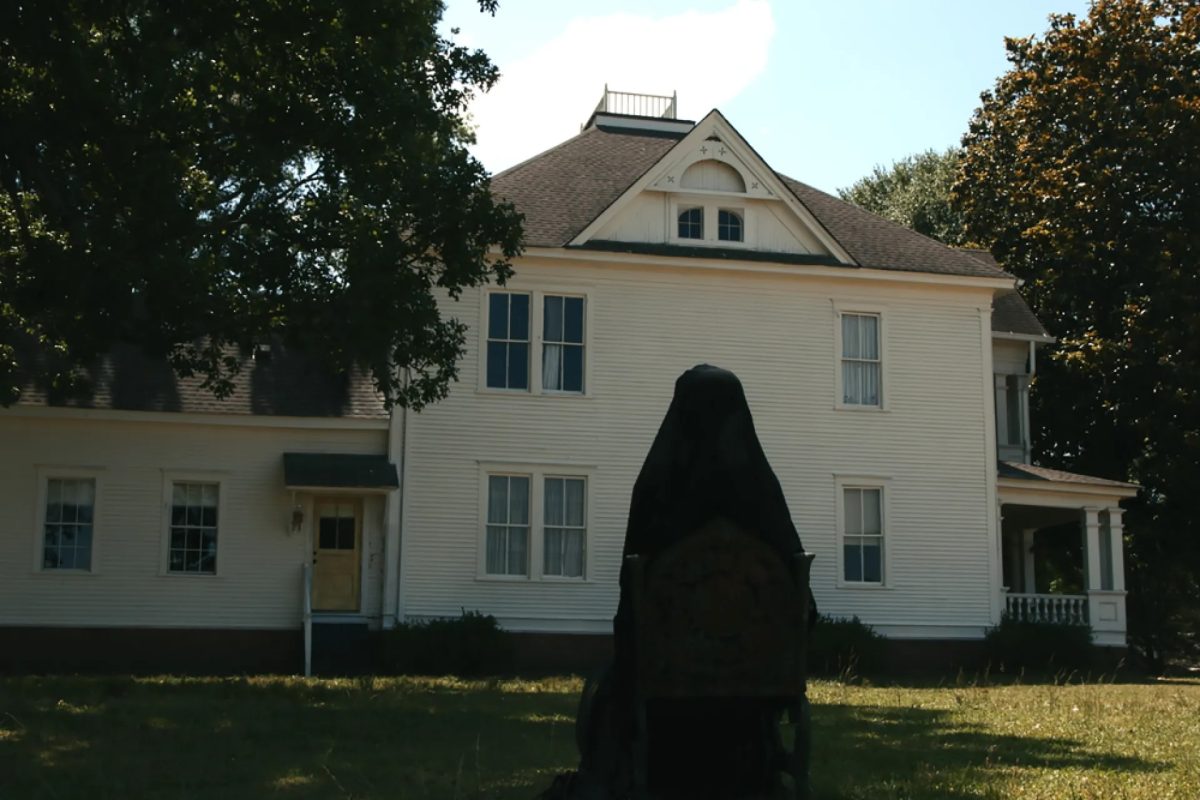Photo courtesy of mtsunews.com
Story and photos by Elaina Nolan / Contributing Writer
Throughout the week, MTSU students, faculty and alumni visited campus to present for the annual Scholars Week. On Wednesday, MTSU’s Media and Entertainment professors shared some of their research and latest findings with students, delivering presentations. Each of the professors in the event had 10 minutes to show their presentations at the Student Union during the Faculty Presentation Reception.
The presentations started off with MTSU professor Sanjay Asthana. Asthana is a part of the School of Journalism and Strategic Media in the College of Media and Entertainment.
Asthana’s presentation covered different topics in youth, information and communication technology and violent extremism. Asthana showed many examples during his presentation, and he spoke a lot about world peace through religious and public figures. In addition to the discussion of religious public figures, Asthana spoke about the “Average Muhamed.” Asthana also spoke of the violent extremism through the killings done by the white supremacist.
Next in the presentations was Zeny Sarabia-Panol, the associate dean of the College of Media and Entertainment. Sarabia-Panol discussed the book that she co-authored, titled “Corporate Social Responsibility, Public Relations and Community Engagement: Emerging Perspectives from Southeast Asia.” The book discusses tensions between concepts of traditional values and modernity.
After Sarabia-Panol finished speaking, MTSU professor Katie Foss came up to present. Foss spoke about the sled dog heroes of the 1925 diphtheria epidemic. Foss showed many examples during the presentation that showed us how Americans have viewed diphtheria and how media has misrepresented the disease.
Professor Trevor de Clercq followed with a presentation about ambiguity in the analysis of Anglo-American popular music. Clercq showed the audience different examples of chords in music ranging from 1991-2013.
Sally Ann Cruikshank, an assistant professor from the School of Journalism and Strategic Media, came on next with her presentation. The focus of Cruikshank’s presentation was media oppression made out to be structural violence in Ethiopia.
Cruikshank went in depth about the interviews she had with 37 different journalists from Ethiopia. Press and media have been on and off with the law since 1991 in Ethiopia. There were even stories of reporters in Ethiopia getting beaten up even after simple stories they covered like youth sports. In effect, media had to be changed to word of mouth, which failed because, as Cruikshank says, “The telephone game doesn’t always end so well.”
To contact Lifestyles Editor Mamie Lomax, email lifestyles@mtsusidelines.com.
For more updates, follow us at www.mtsusidelines.com, on Facebook at MTSU Sidelines and on Twitter at @Sidelines_Life.


